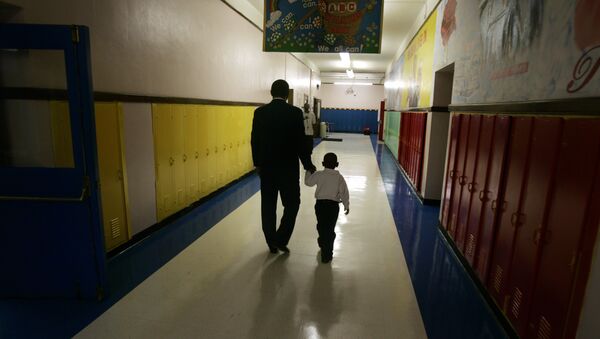"The share of public school students who qualify for free or reduced lunch in the United States has grown to 51 percent, in an indication of growing poverty, according to a report released on Friday [January 16]," Reuters reported.
Low-income students have become the majority of US schoolchildren for the first time in about half a century, the Southern Education Foundation (SEF) claims, adding that the worrisome tendency has been developing over the last several decades. In SEF's 2013 research bulletin, Steve Suitts, the foundation's vice president, noted:
"No longer can we consider the problems and needs of low income students simply a matter of fairness… Their success or failure in the public schools will determine the entire body of human capital and educational potential that the nation will possess in the future."
Low income students are now a #newmajority of the nation's public schools. Read the report: http://t.co/8B72lOYfdU. pic.twitter.com/Vj6f1wFU8N
— SEF (@SouthernEdFound) 16 января 2015
Mr. Suitts insisted that the low-income students' needs were not met with appropriate support in the United States, stressing that "the trends of the last decade will be prologue for a nation not at risk, but a nation in decline."
According to SEF's analysis, the number of low-income students has been growing steadily – from 40 percent in 2000 to 51 percent by 2015, with the majority of lower-income students located in Southern and Western states. It was found that Mississippi led the list in 2013; there 71 percent students qualified as low-income, while the US's second highest rate was registered in New Mexico, where 68 percent of schoolchildren come from low-income families.
The Washington Post underscores that students from low-income families are doomed to trail their more successful peers and have a little if any chance of catching up: having less support at home and less educational activities outside of school, most of them do not go to college later.
Thus far, experts point to the fact that the future income gap between poor students and their prosperous peers becomes predetermined at the very early stages of their education, undermining the idea that all members of American society should be provided with equal opportunities.
"The fact is, we've had growing inequality in the country for many years," said Kent McGuire, president of the Southern Education Foundation, as cited by the media outlet.
"It didn't happen overnight, but it's steadily been happening. Government used to be a source of leadership and innovation around issues of economic prosperity and upward mobility. Now we're a country disinclined to invest in our young people," he stressed.
Currently, the states and the federal government of the US spend about $500 billion annually on primary and secondary schools. However, experts claim it is not enough to meet the complex needs of poorer young Americans, calling upon Washington to invest more in the "nation's future."




